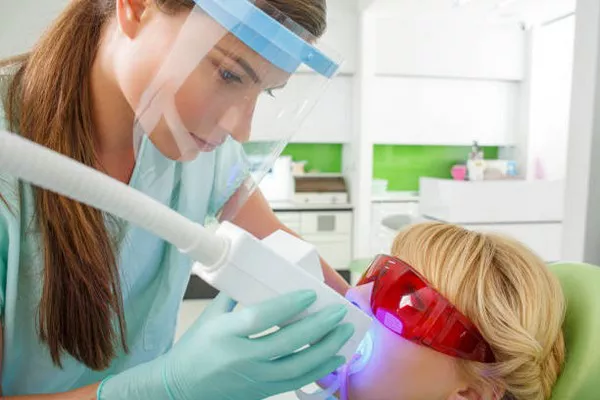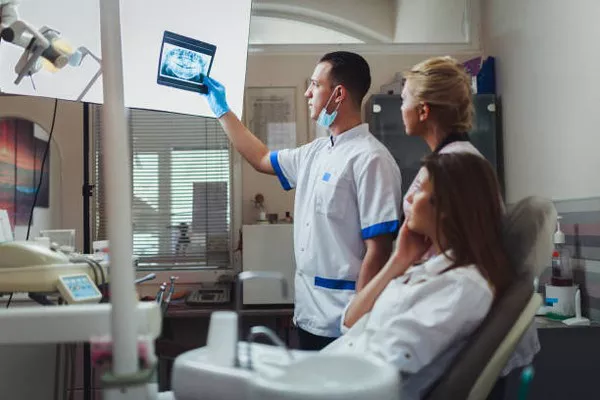Tooth filling is a common dental procedure that involves the removal of decayed tissue and replacing it with a filling material to restore the tooth’s function and structure. Although fillings are designed to be durable and long-lasting, some patients may experience tooth pain after the procedure. In this article, we will discuss the causes of tooth pain after a filling, prevention measures, and treatment options.
Causes of Tooth Pain After a Filling
The following are some of the reasons why a patient may experience tooth pain after a filling:
Tooth sensitivity: After a filling, some patients may experience tooth sensitivity to hot or cold temperatures. This is typically a temporary condition that occurs due to the irritation of the tooth nerve during the filling process.
High filling: Sometimes, a filling may be placed too high, causing the teeth to come together in an unnatural way when biting down. This can lead to tooth pain, soreness, and even damage to the filling itself.
Cracked tooth: A cracked tooth can also cause tooth pain after a filling. A cracked tooth can occur due to trauma, grinding, or clenching of the teeth. When a tooth is cracked, the filling may not provide enough support to prevent further damage or pain.
Decay: If the decay has progressed close to the tooth’s nerve, it can cause pain even after the filling procedure. In such cases, a root canal may be necessary to address the problems.
Prevention of Tooth Pain After a Filling
Prevention is always better than cure. The following strategies can help prevent tooth pain after a filling:
Good oral hygiene: Brushing and flossing your teeth regularly can help remove plaque and bacteria that can cause cavities. Regular dental check-ups and cleanings also help to detect cavities early, preventing the need for extensive dental work.
Choosing the right filling material: Different filling materials have varying levels of durability and strength. Discuss with your dentist the best filling material for your specific needs.
Avoiding hard foods: Chewing on hard foods like ice, popcorn kernels, or hard candy can damage fillings and cause tooth pain.
Protecting your teeth: If you grind or clench your teeth when sleeping, wearing a nightguard can help protect your teeth from damage and prevent tooth pain after a filling.
Treatment Options for Tooth Pain After a Filling
The following are some of the treatment options available for tooth pain after a filling:
Over-the-counter pain relievers: Taking pain relievers such as ibuprofen or acetaminophen can help relieve mild to moderate tooth pain.
Desensitizing toothpaste: Tooth sensitivity after a filling can be treated with desensitizing toothpaste, which contains compounds that block the transmission of pain signals from the tooth nerve to the brain.
Adjusting the filling: If the filling is too high and causing pain when biting down, the dentist may need to adjust the filling to improve the bite and reduce the discomfort.
Root canal treatment: If the decay has progressed too far and affected the tooth’s nerve, a root canal may be necessary to remove the damaged tissue and save the tooth.
Can a dentist mess up a filling?
Unfortunately, it is possible for a dentist to mess up a filling. While most fillings are successful and long-lasting, there are a number of things that can go wrong during the procedure. For example, the filling material may not bond properly with the tooth, leading to leakage and decay. The filling may also be placed too high or low, causing bite problems or discomfort. In rare cases, the filling may even crack or fall out completely.
However, if you have concerns about a recent filling, it’s important to talk to your dentist right away. They can examine the affected tooth and determine whether any additional treatment is needed to fix the problem.
Conclusion
Tooth pain after a filling is a common problem that many patients experience. While it can be uncomfortable and even painful, there are steps you can take to prevent it from happening and treat it if it does occur. Maintaining good oral hygiene, choosing the right filling material, avoiding hard foods, and protecting your teeth from grinding or clenching are all important strategies in preventing tooth pain after a filling. If you do experience tooth pain after a filling, there are several treatment options available to alleviate discomfort and restore your oral health. Remember to consult your dentist if you experience any tooth pain or discomfort after a filling to determine the best course of action.
Related Topics:



























